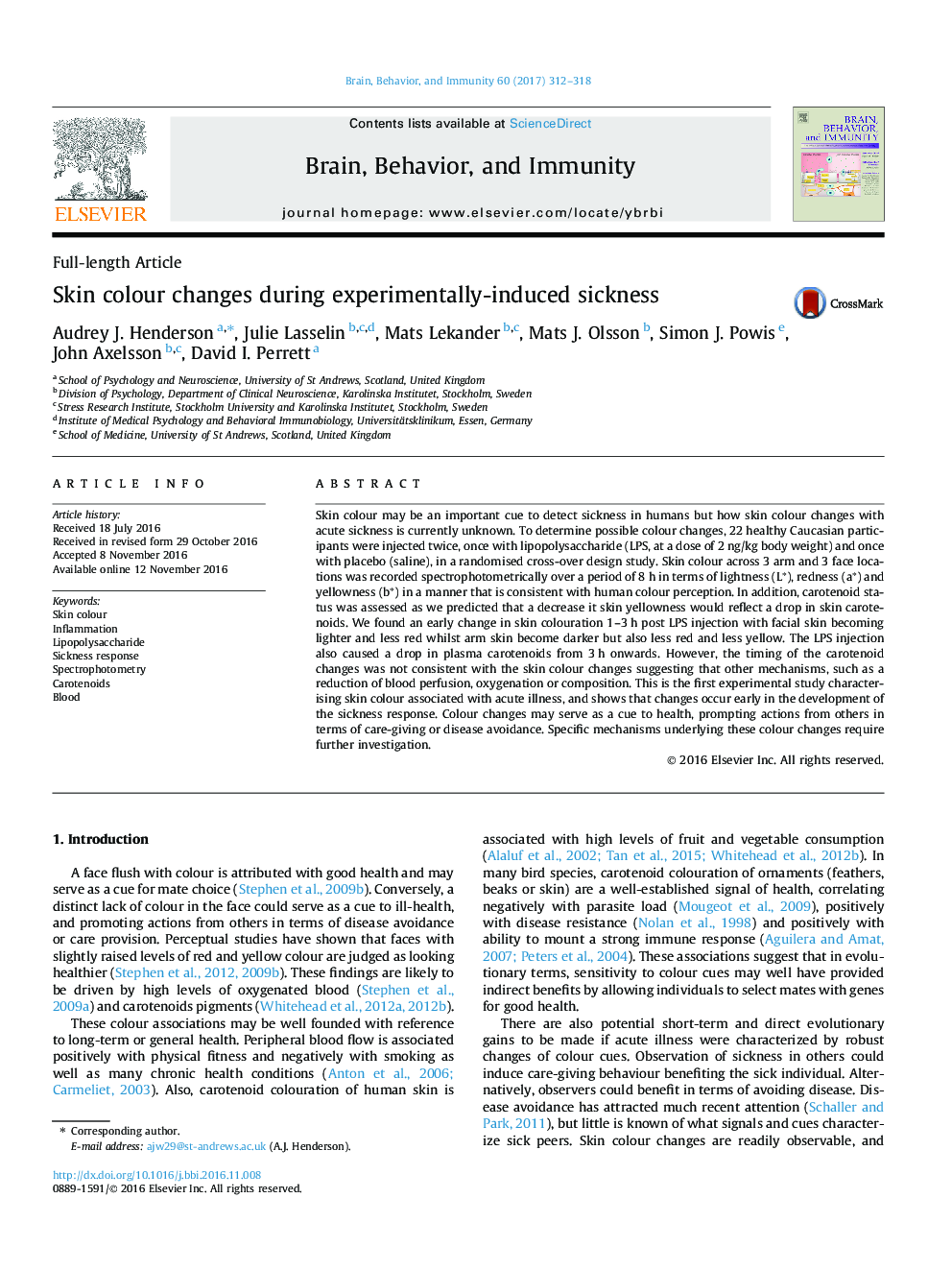| کد مقاله | کد نشریه | سال انتشار | مقاله انگلیسی | نسخه تمام متن |
|---|---|---|---|---|
| 5040759 | 1473907 | 2017 | 7 صفحه PDF | دانلود رایگان |
- How skin colour changes in response to acute sickness was investigated.
- Illness is manifest in skin colour differently depending on body region.
- The face lost redness and became lighter with acute sickness.
- The arm lost redness and yellowness but became darker with acute sickness.
- Skin colour changes likely provide a cue to health status of others.
Skin colour may be an important cue to detect sickness in humans but how skin colour changes with acute sickness is currently unknown. To determine possible colour changes, 22 healthy Caucasian participants were injected twice, once with lipopolysaccharide (LPS, at a dose of 2Â ng/kg body weight) and once with placebo (saline), in a randomised cross-over design study. Skin colour across 3 arm and 3 face locations was recorded spectrophotometrically over a period of 8Â h in terms of lightness (Lâ), redness (aâ) and yellowness (bâ) in a manner that is consistent with human colour perception. In addition, carotenoid status was assessed as we predicted that a decrease it skin yellowness would reflect a drop in skin carotenoids. We found an early change in skin colouration 1-3Â h post LPS injection with facial skin becoming lighter and less red whilst arm skin become darker but also less red and less yellow. The LPS injection also caused a drop in plasma carotenoids from 3Â h onwards. However, the timing of the carotenoid changes was not consistent with the skin colour changes suggesting that other mechanisms, such as a reduction of blood perfusion, oxygenation or composition. This is the first experimental study characterising skin colour associated with acute illness, and shows that changes occur early in the development of the sickness response. Colour changes may serve as a cue to health, prompting actions from others in terms of care-giving or disease avoidance. Specific mechanisms underlying these colour changes require further investigation.
Journal: Brain, Behavior, and Immunity - Volume 60, February 2017, Pages 312-318
